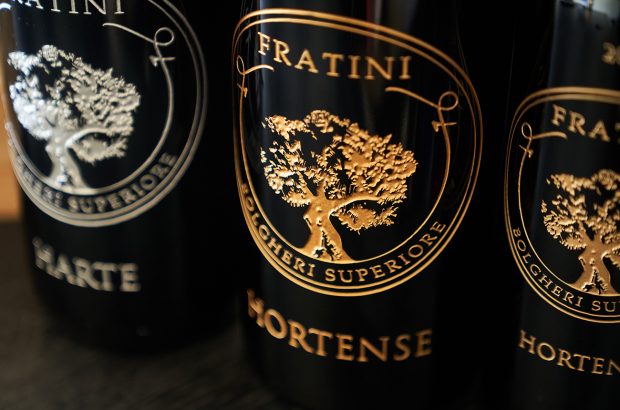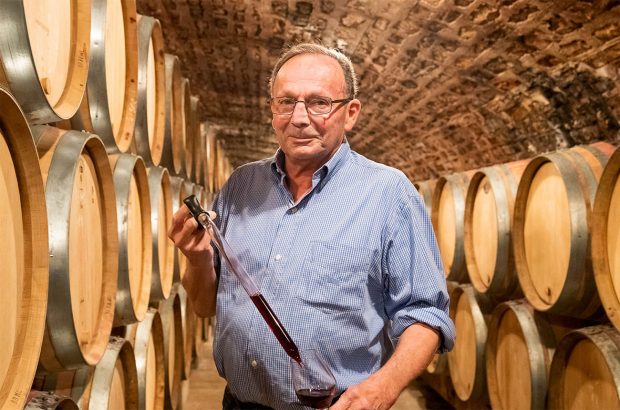When I first studied the effect of climate change on wine 15 years ago, it was a niche issue for most in the industry. Not any more. Wine producers don’t need to read the dire warnings in the latest Intergovernmental Panel on Climate Change (IPCC) report to feel anxious about the future; they can see the effects of climate change in their vineyards and wines. As viticulturist Richard Smart put it some years ago, the wine industry is the ‘canary in the coalmine of agriculture’, because vines are so environmentally sensitive. Dr Alistair Nesbitt, author of the UK’s first PhD in viticulture and climate science, believes ‘there are worrying questions on the horizon for the established regions of the wine world’.
Across these regions, as elsewhere on the planet, global carbon dioxide emissions are rapidly driving up temperatures. Weather patterns are becoming more erratic and extreme. Adrian Bridge of Taylor’s Port highlights some of the challenges in Portugal: ‘In 2017, wildfires killed 66 people and the source of the Douro River dried up for the first time ever. Then, in May 2018, 12% of our annual rainfall fell in just one hour, which was particularly disastrous given the steep terracing of Douro vineyards.’
Dr Gregory Jones of Oregon’s Evenstad Center for Wine Education, who pioneered research into climate change and wine, says the models he devised in the mid-1990s predicting significant temperature rises in the world’s wine regions up to 2020 have turned out to be about right.
‘The risk is actually that our current climate models are under-projecting future change, given the way the climate feeds back on itself,’ he says.
As global temperatures rise, access to water is becoming a serious concern. Lower rainfall in South Africa – which resulted in Cape Town almost running out of water in 2017 – has had a huge impact in the Western Cape, home to most South African wineries.
According to soil scientist Heinrich Schloms, the region’s vineyards shrank by 15% in 2018 because of the drought. ‘Soil tells a story about the climate. Now, when it’s dry, it’s really dry; and when it rains, it rains a lot. Soil salinity is a major problem. If you drive through the Western Cape, you see “For Sale” signs everywhere.’

Taylor’s maintains its Douro Valley terraces with mechanical cutting – no herbicides are used to control unwanted vegetation
Showing leadership
Faced with the threat of climate change, wine producers have understandably tended to focus on adaptation, for example by changing vineyard and winery practices or planting vines at altitude. But Bridge is more interested in how the wine sector can show leadership in taking measures to limit climate change. ‘I struggle with the idea of planting new varieties or moving vineyards, because it feels like giving up,’ he laments. ‘And there’s no need to give up – there’s a lot we can do today.’
Dr Kim Nicholas of Sweden’s Lund University Centre for Sustainability Studies agrees that moving vineyards is not a sustainable option. ‘It’s absolutely crazy to think we can outrun climate change; we have to take urgent steps to avoid it. The wine industry is in a unique position to push for change because it has skin in the game. So much of wine’s identity is dependent on climate.’ Nicholas wants to see the wine sector target zero greenhouse gas emissions across the supply chain. ‘Wine producers can lead by showing the world what a low-carbon high life – a good life that is compatible with a sustainable environment – looks like.’
In Champagne, ‘2018 was the hottest year ever recorded’, says Gilles Descôtes of Bollinger, the first Champagne producer to receive sustainable viticulture certification. ‘I am confident we can maintain typicity by adapting our vineyard methods – but the real challenge is reducing our footprint and fighting against climate change now.’
Bridge believes ‘the wine industry as a whole has still not woken up to this issue’. He is convinced the sector needs to change gear and move from analysing the problem to finding solutions. In July 2018, he launched the Porto Protocol with support from former US President Barack Obama, and followed this by organising a conference in Porto in March 2019, bringing together wine producers, climatologists and scientists.
There are some encouraging signs. ‘I feel that sustainability will be the main theme for the international wine industry over the coming years,’ says Pau Roca, the new director general of the Paris-based International Organisation of Vine & Wine (OIV). ‘The wine sector is small in global terms, but it can be a leader on climate change.’
Emissions targets
Some wine producers are already showing leadership. Among the most remarkable is Spanish giant Torres. The company has set targets to reduce CO2 emissions per bottle at its estates across Spain, Chile and the US by 30% by 2020, 50% by 2030 and 80% by 2045, compared to 2008 levels, based on the entire cycle from vineyard to transport. Torres invests 11% of annual profits in renewable energy, electric cars, water saving and biodiversity schemes, including reforestation of 6,000ha in Chile.
Jackson Family Wines, which owns 40 wineries in the US, France, Italy, Australia, Chile and South Africa, is another pioneering leader in sustainable practices. Since 2008, the company has reduced its CO2 emissions per bottle by 33% and its water consumption by 60%, alongside ambitious targets to offset electricity consumption through renewables, ensure grapes are certified sustainable and achieve zero waste.
‘We have been pleasantly surprised by what we have been able to do so far,’ says Katie Jackson, senior vice-president for corporate social responsibility. ‘We have exceeded our targets for 2020 on CO2 emissions and zero waste wineries already. In some areas, such as renewables, we still have work to do, but I believe we’ll get there by next year.’ Jackson points out that being sustainable can also reduce costs. ‘Reducing the weight of our bottles not only enabled us to cut 4% of our emissions; it also saved us $1m.’
Torres and Jackson recently joined forces to create a working group of wineries from all over the world to decarbonise the wine industry. The aim is to share best practices and take action, with the target of an 80% reduction in carbon emissions across the industry by 2045. ‘We are open to anyone who can demonstrate they are serious about climate change,’ says Jackson. ‘We have already received lots of interest from producers around the world.’

UC Davis Sustainable Winery in California makes use of solar panels and lithium batteries
Self-sustainable
Wineries typically consume significant quantities of energy and water. The UC Davis Sustainable Winery in California, the first self-sustainable, zero carbon winery in the world, shows that it is possible to produce wine off-grid without contributing to climate change. Its sophisticated energy system uses photovoltaic solar panels and lithium batteries, controlling temperature by efficient night air-cooling in summer and warm day heating in winter. It is designed to capture rainwater, for filtering and recycling at least 10 times around the system. The ambition is not just to be carbon neutral, but to become ‘carbon negative’ by sequestering CO2 and exporting renewable energy.
Professor Roger Boulton of UC Davis, who led the planning and design of the winery, insists that to be sustainable wineries must include in their calculations the emissions released during fermentation. ‘These are the most concentrated of all industrial CO2 emissions,’ says Boulton, ‘and since CO2 is concentrated at ground level in wineries, they are an obvious place to capture it.
‘The world’s carbon cycle is overloaded. We have a global responsibility to stop releasing the most concentrated form of CO2 as part of our activities.’
Torres and Jackson are among a select group of wine producers experimenting with carbon capture and reuse. Torres is currently trialing a smart energy system at its winery in Penedès, Spain that recycles CO2 captured during the fermentation process to produce methane for use as fuel in forklift trucks and other winery transport.
Backsberg Estate, the first South African wine producer to gain carbon neutral status, has carried out a carbon audit of all its emissions from energy consumption through to fermentation. ‘As a family business that has been on this land for more than 100 years, we have to take account of our impact by measuring what we do and offset all of our emissions,’ says CEO Simon Back. Backsberg’s ‘Tread Lightly’ wines come in lightweight bottles with labels made from recycled sugarcane waste, hemp and linen, to highlight the importance of sustainable packaging.
Conservation in vineyard zones is another critical factor in mitigating climate change. Dr Olga Barbosa of Chile’s Wine, Climate Change and Biodiversity Program works closely with Chilean producers to show them the benefits of preserving biodiversity. ‘Conservation of forests in wine regions is important, and not only because they store 24 tonnes of CO2 per hectare. Where there are forests next to vineyards, temperatures are lower and vine diseases much less significant.’
Barbosa’s Chilean compatriot Gerard Casaubon is director of the Viña Concha y Toro Centre for Research and Innovation, and he uses micrometeorology and satellite images to determine irrigation needs in vineyard plots, enabling a reduction both in water use and the energy required to pump water to the vineyards.
Supply chain
But wine producers are only part of the picture. A sustainable future for wine requires activism at every stage of the supply chain. Transport and packaging are among the highest sources of CO2 emissions. According to Pierre Corvisier of beverage logistics company JF Hillebrand: ‘The wine sector tends to focus on climate change effects in the vineyards but far less on the impact of transporting wine thousands of miles from Europe to Japan, which releases huge CO2 emissions.’
Descôtes acknowledges that ‘the next big challenge for Bollinger is changing our approach to travel and transporting bottles, which significantly increases our carbon footprint’. One solution might be to transport more wine in bulk. According to Vicente Sánchez-Migallón, founder of the World Bulk Wine Exhibition, this can cut emissions of CO2 by up to 40%, as well as significantly cutting transport costs. Another option is to buy wines made closer to home. ‘Drinking local is one of the key elements to sustainability,’ says Linda Johnson-Bell of the Wine and Climate Change Institute in Oxford.
Ultimately, the most effective pressure for change is likely to come from consumers, who increasingly want to buy climate-friendly products. Torres says he has seen no evidence so far that his efforts to make the company sustainable affect consumer interest in his wine. ‘We are doing this for the next generation,’ he says. Only a few producers, such as Sicily’s Donnafugata, currently display the carbon footprint of wines on labels. But wine writer Dr Jamie Goode thinks consumer views could change fast: ‘There can be big, sudden shifts in social attitudes – as happened with smoking and plastic bags – that are not always predictable.’
Champagne Krug president Margareth Henriquez believes consumers want wine producers to behave honestly and responsibly. ‘In 10 years’ time, if companies like Krug can’t show that they are absolutely committed to the planet, we will be in real trouble – and I love that, because it pushes you very hard.’ Cristina Mariani-May of Castello Banfi in Tuscany agrees. ‘There are no secrets any more. Companies cannot brush over the realities of what they are doing,’ she says. ‘Consumers will increasingly support producers that show leadership. And retailers need to ensure they are not just seeking the best margins but working with responsible, sustainable producers.’
The scope for the wine industry to play a high-profile role in the global transition to a low carbon economy is clear, and the tools and knowledge are there. As Languedoc wine producer Gérard Bertrand puts it: ‘Wine can deliver a message.’
However, not all in the wine world are sufficiently engaged yet in what is likely to be the century’s greatest challenge. ‘Some large wine companies need to be called out and really interrogated on what they are doing to be sustainable,’ says Goode. As the 2018 IPCC report made clear, the speed with which climate change is now warming the planet requires a far more urgent response from wine producers everywhere. ‘We cannot wait for some magic solution and avoid the hard choices we face. We need to act,’ says Bridge.
See also: How sustainable is your wine?
Rupert Joy is a former diplomat, international consultant and occasional wine writer















